SHB Grade characteristics of Guatemalan Coffee beans introduction to the flavor and taste of coffee beans in eight major producing areas
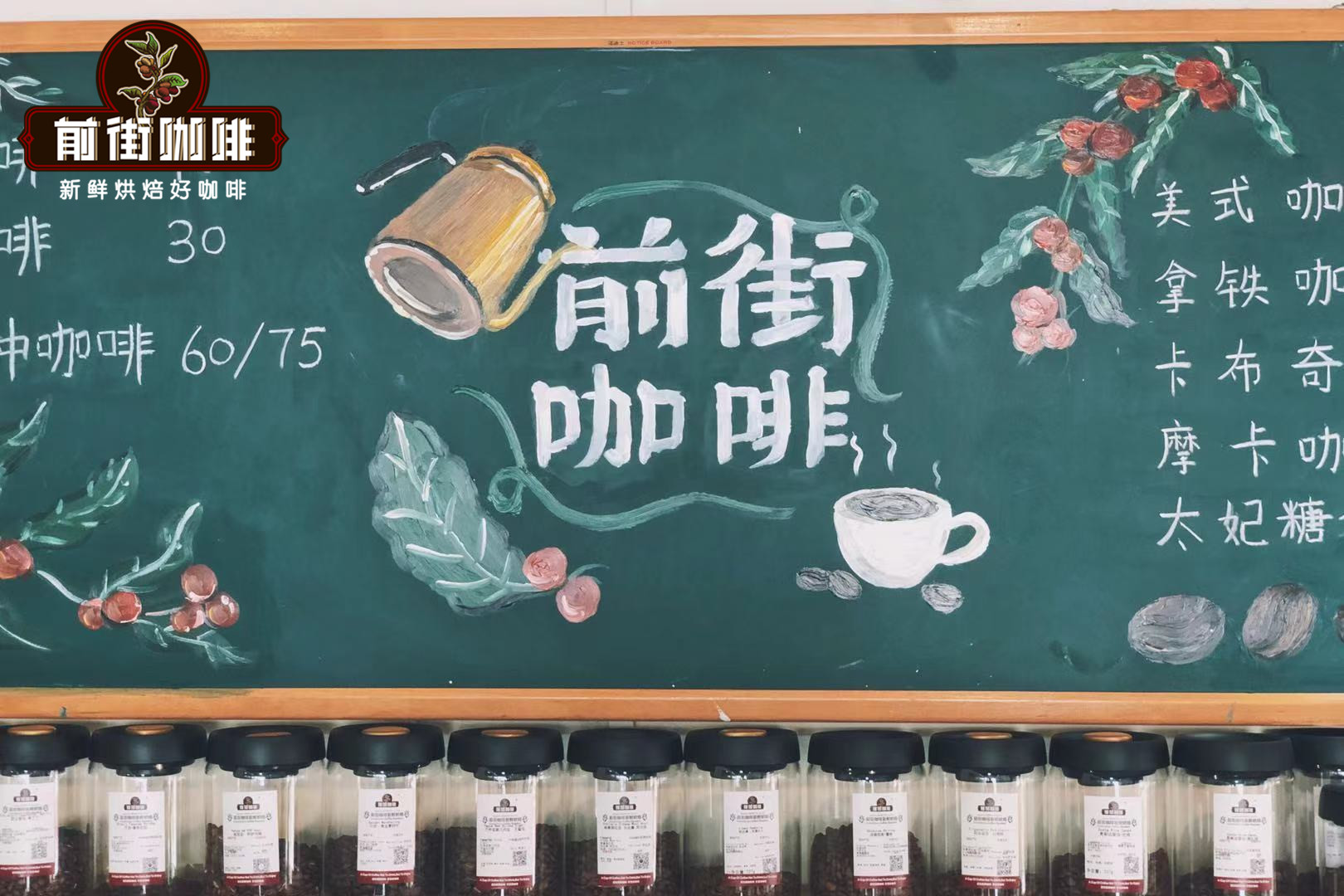
Professional coffee knowledge exchange more coffee bean information please follow the coffee workshop (Wechat official account cafe_style)
When it comes to coffee in America, people often think of coffee from South America such as Brazil and Colombia at first, but when it comes to coffee from Central America, Panama grabs its focus. However, Guatemalan coffee is also a coffee with the characteristics of its producing areas. Otherwise, Guatemala would not be in the Qianjie coffee rations bean series.
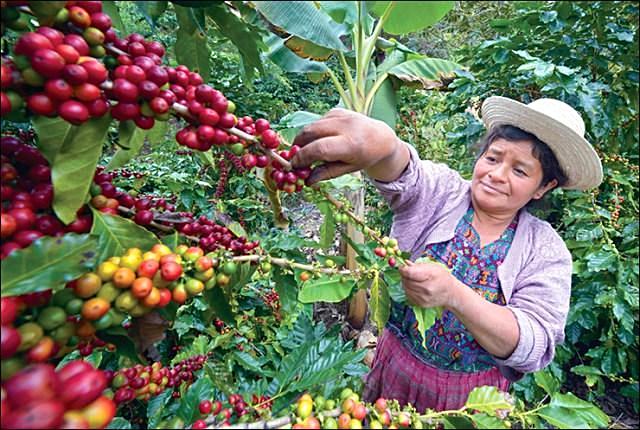
Anyone who has tasted Guatemalan coffee knows that the coffee in this country is famous for its rich, smooth taste and slightly charcoal-burning flavor, just like the sweetness of chocolate and smoke mixed together. It is precisely because of its unique charcoal-burning aroma that Antigua coffee is also called "cigarette coffee".
A basic overview of the producing countries of Guatemala
Guatemala is located in the south of the North American continent and the northwest of Central America. The country is bordered by Mexico in the west and north and Honduras and El Salvador in the southeast. 2/3 of the terrain in Guatemala is mountains and plateaus, and its west and south belong to volcanic belts with more than 30 volcanoes.
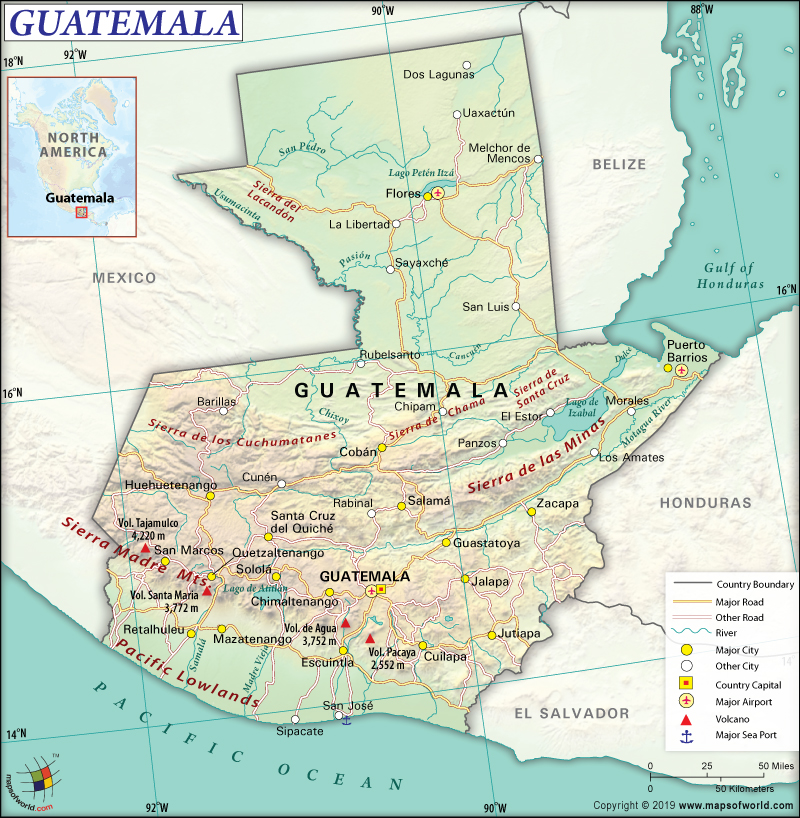
Guatemala is in the tropics, the northern and eastern coastal areas belong to the tropical rain forest climate, and the southern mountains belong to the subtropical climate, with two distinct dry and wet seasons in a year, with the wet season from May to October and the dry season from November to April of the following year. The central plateau is the cultural center of Guatemala, which ranges from 1300 to 1800 meters above sea level. The climate is mild throughout the year, with temperatures between 18 degrees Celsius and 28 degrees Celsius.
The annual precipitation is 2000-3000 mm in the northeast and 500-1000 mm in the south. The average altitude in Guatemala is high, with coffee belts over 1500 meters and latitudes between 14 and 16 degrees north, making it easy to grow very hard beans.
History of coffee cultivation in Guatemala
The history of coffee drinking in Guatemala was recorded as early as 1747, but the real beginning of the history of coffee cultivation in Guatemala was not until 1750, when Father Jesuit introduced coffee trees to Guatemala and planted them. In 1845, coffee became an important cash crop in Guatemala. In 1880, coffee accounted for 90% of Guatemala's total exports, and in order to achieve greater production, the authorities targeted indigenous land, forcing them to sell it and move to places with poorer soil. To date, about 60000 family farms operate the coffee industry in Guatemala. Coffee is grown in the Sierra Mountains near the Pacific coast. The Sierra range stretches across the country, connecting up to the Rockies and down to the Andes.
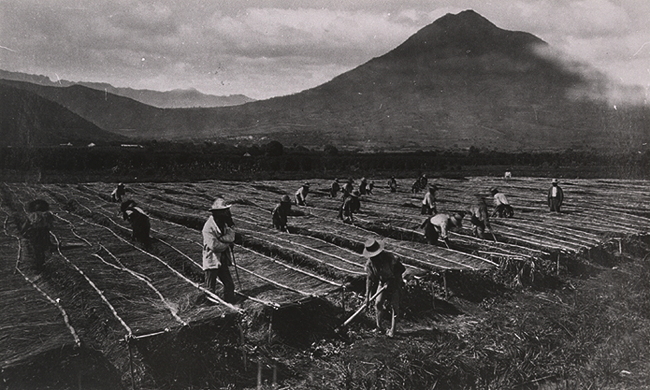
Coffee growing areas in Guatemala
The Guatemalan Coffee Association established the Guatemalan coffee bean brand and defined Guatemalan coffee beans from eight different origins under the slogan "one Rainbow Choice (A Rainbow of Choices)". Eight regions are divided into Antigua (Antigua Classic), Vivetnam (Huehuetenango), Koban rainforest (Rainforest Coban), Attland (Traditional Atitlan), Farahannis Plain (Fraijanes Plateau), San Marco (Volcanic San Marcos), Akatti Nanguo (Acatenango) and New Oriental (New Oriente).
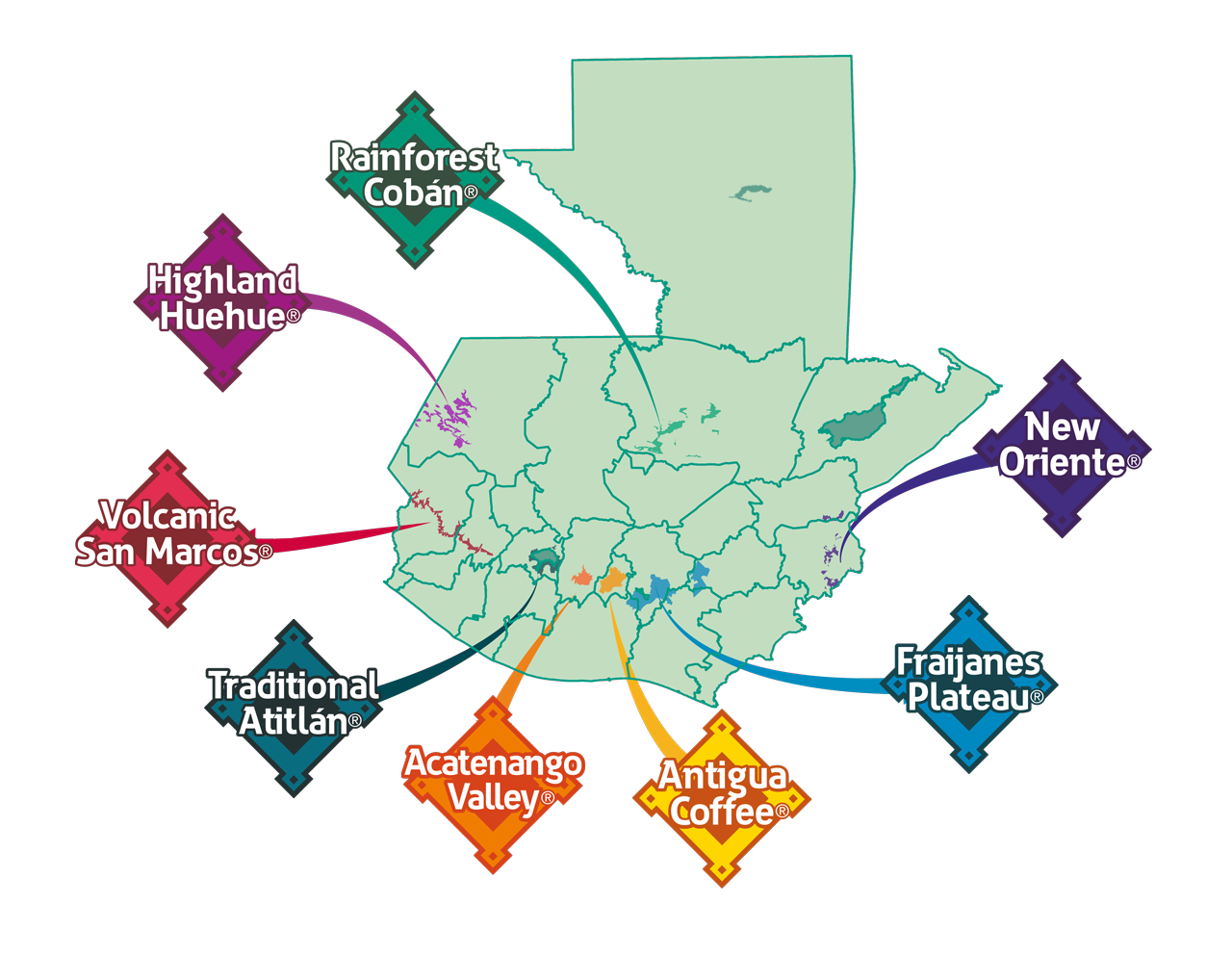
Next, Qianjie Coffee will introduce you to three producing areas that many people have heard of:
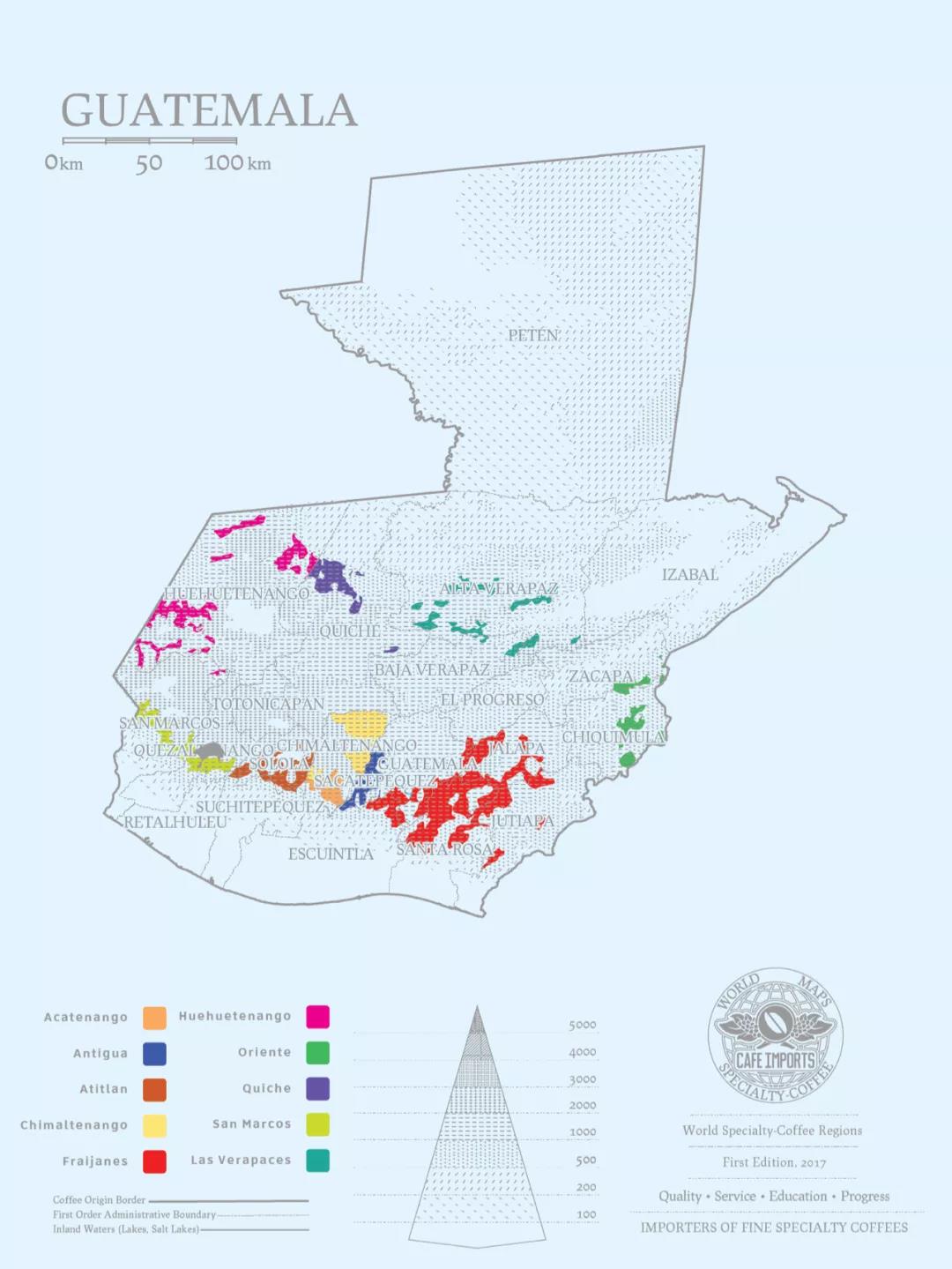
[Antigua producing area]
Antigua is surrounded by three volcanoes (Agua, Fuego and Acatenango) and forms a valley. Among them, Fuego volcano is an active volcano, which erupts irregularly, which makes the soil of Antigua producing area rich in minerals. The producing area retains a large number of virgin forests, coupled with fertile volcanic soil, and the coffee plants in the producing area are rich in nutrients for their growth. Antigua has a mild climate and stable humidity all the year round and rarely experiences extreme climate change. Coffee grows at an altitude of more than 1500 meters. The coffee produced in this area is the most award-winning and the most famous in Guatemala.
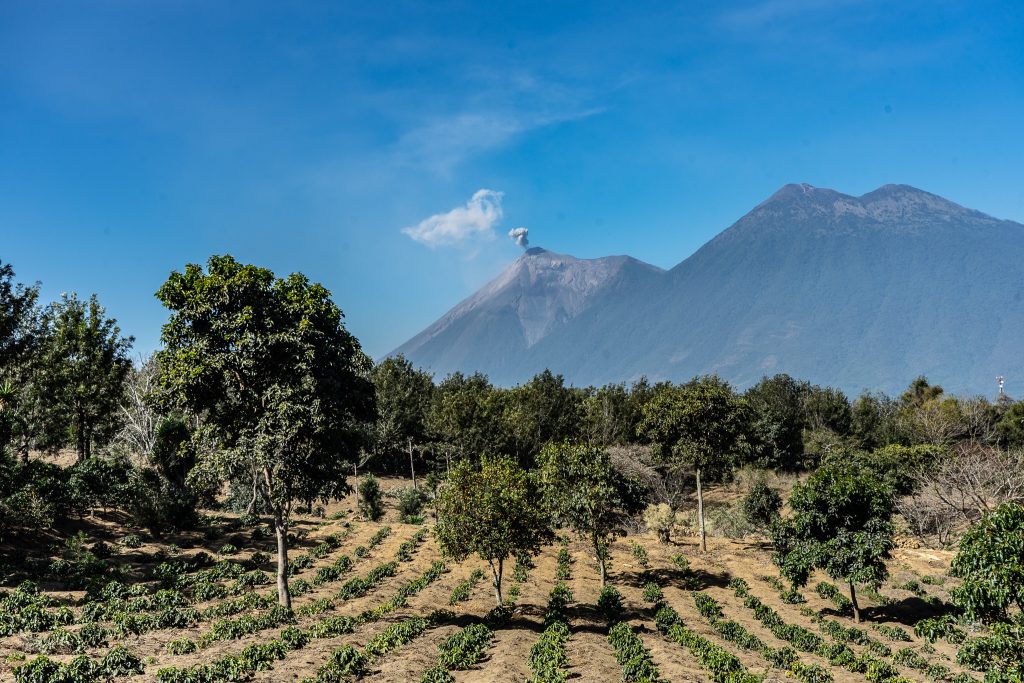
One of the coffee beans from Guatemala that Qianjie Coffee bought is from Antigua. What's more, it comes from La Minita. Raminita benefits from the climate and altitude formed by the geographical advantages of its manor, and the location limits the number of pests, so coffee is grown here without pesticides, and a few pests do not have much impact on coffee trees.

The manor conducts soil tests twice a year to determine how to fertilize, and is very careful when using products that increase yield, about three times a year. The scientific cultivation and management of the manor has led to the excellent flavor of Qianjie Coffee, and Raminita's strict monitoring of the whole process from planting to packaging ensures the quality of this coffee bean.
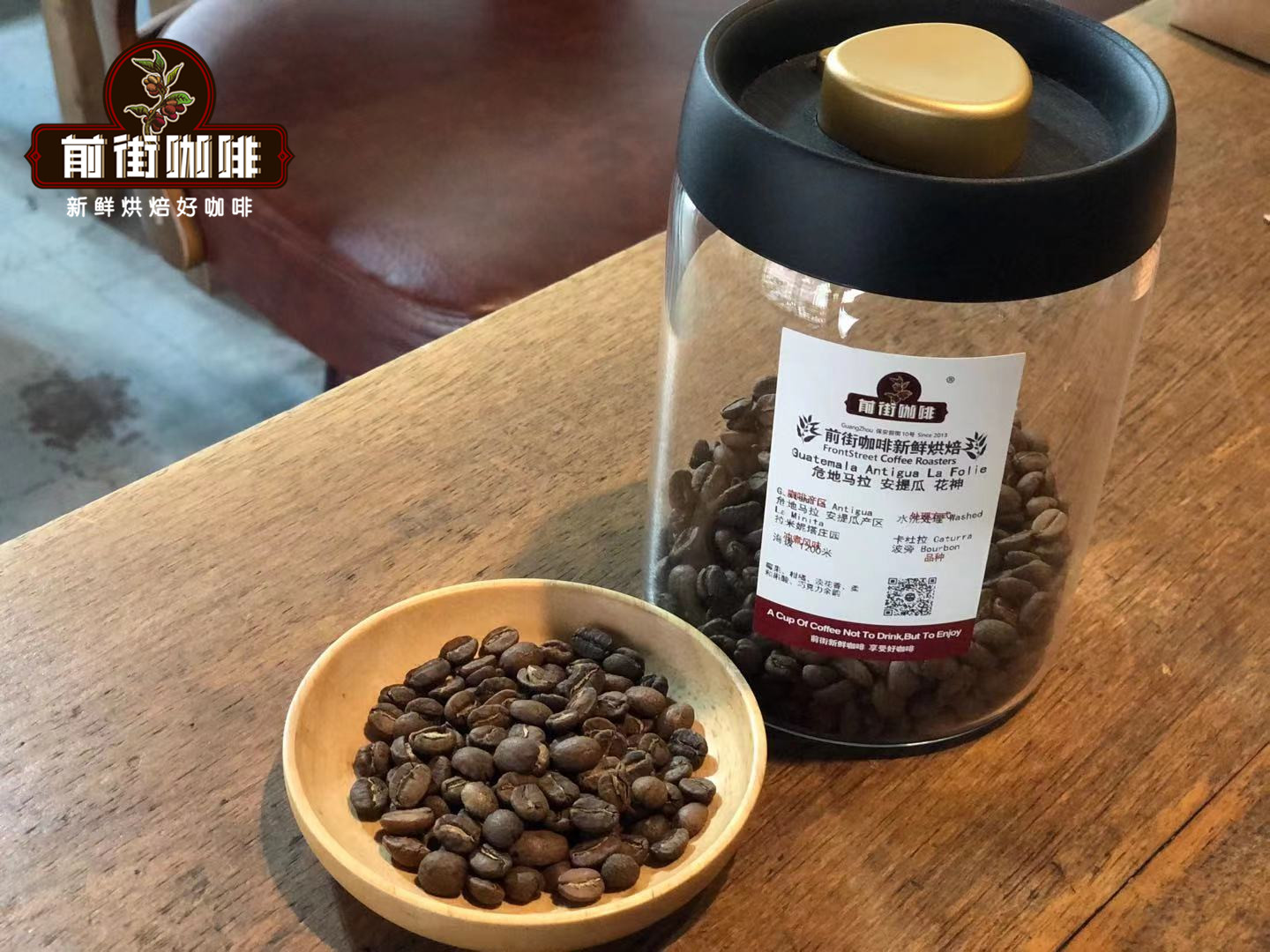
Front Street Coffee Guatemala Antigua Flower God
Producing area: Antigua producing area of Guatemala
Manor: la Minita Manor La Minita
Altitude: 1200 m
Variety: Kaddura, bourbon
Treatment method: washing treatment
[Vivette South Fruit producing area]
Vivette south fruit producing area has a dry climate and high altitude. Thanks to the dry hot wind from the isthmus of Twentpec, Mexico, coffee in the Vivetna fruit producing area is protected from frost. This producing area has warm, humid Caribbean air from the Central Mountains, clouds, changeable climate, and fertile volcanic soil.
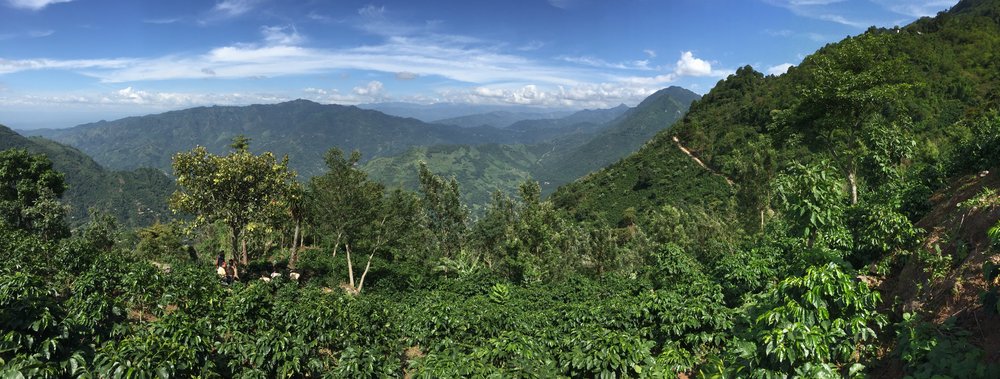
One of the rations beans in Qianjie Coffee is a coffee bean from Vivette Nan Fruit producing area.
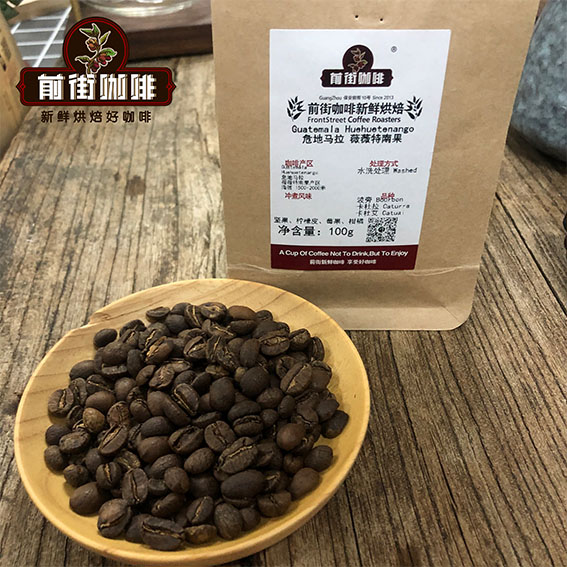
Qianjie Coffee Guatemala Vivette Nanguo
Producing area: Guatemala Vivette South Fruit producing area
Altitude: 1500m-2000m
Varieties: bourbon, Kaddura, Kaduai
Treatment method: washing treatment
[new Oriental producing area]
In ancient times, the New Oriental region was still a volcanic area, where the soil was made up of metamorphic rocks, so it was rich in minerals. The New Oriental District used to be the poorest area in Guatemala before it began to grow coffee. Since the 1950s, farmers in the mountains have started growing coffee on the natural, nutritious land here. Gradually, it has become a rising star in the Guatemalan coffee industry.
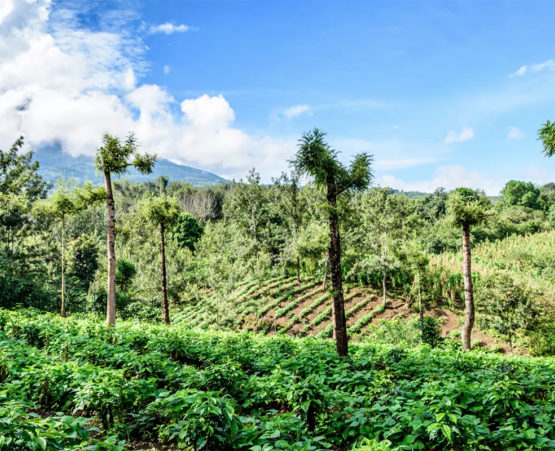
The coffee produced in New Oriental area has a balanced flavor, mellow thickness and chocolate flavor.
Washing and cooking technique
The former street coffee Guatemala Antigua flower god as an example for segmented extraction:
Steam with 30 grams of water for 30 seconds, small water flow around the circle to 125 grams for sectional injection, water level drop is about to expose the powder bed, continue to inject water to 225 grams to stop injection, and so on when the water level drop is about to expose the powder bed, remove the filter cup, (steaming starts timing) the extraction time is 2 minutes 39 percent 00 ".
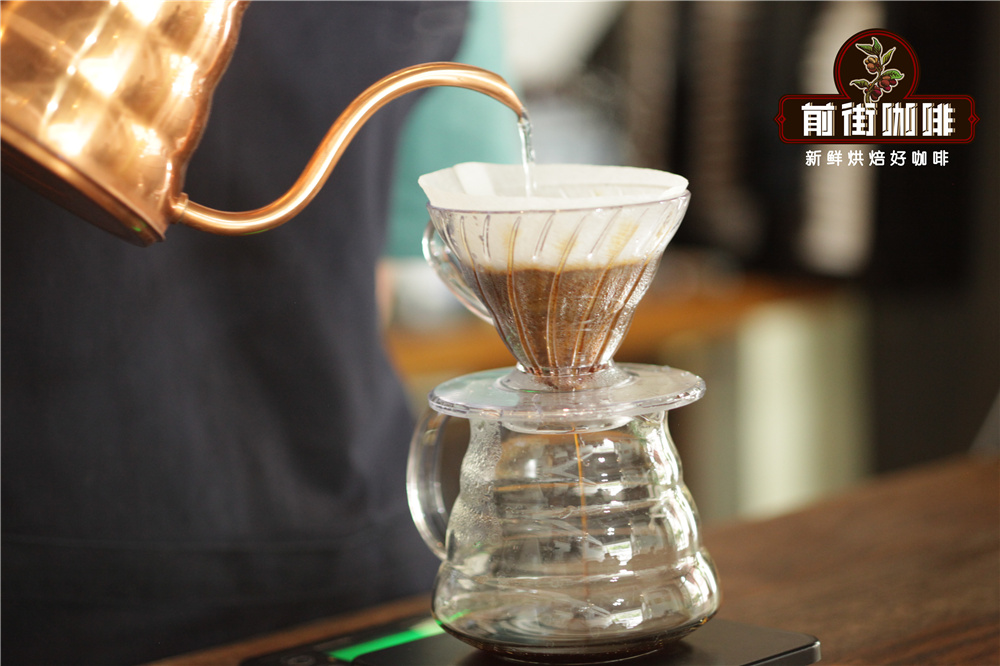
Flavor description
Citrus acid is obvious, sour juice, rich floral aroma, pleasant sweetness, medium mellow, slightly caramelized and smoky in the back, pure, mild, smooth texture, balanced and lively layered taste.
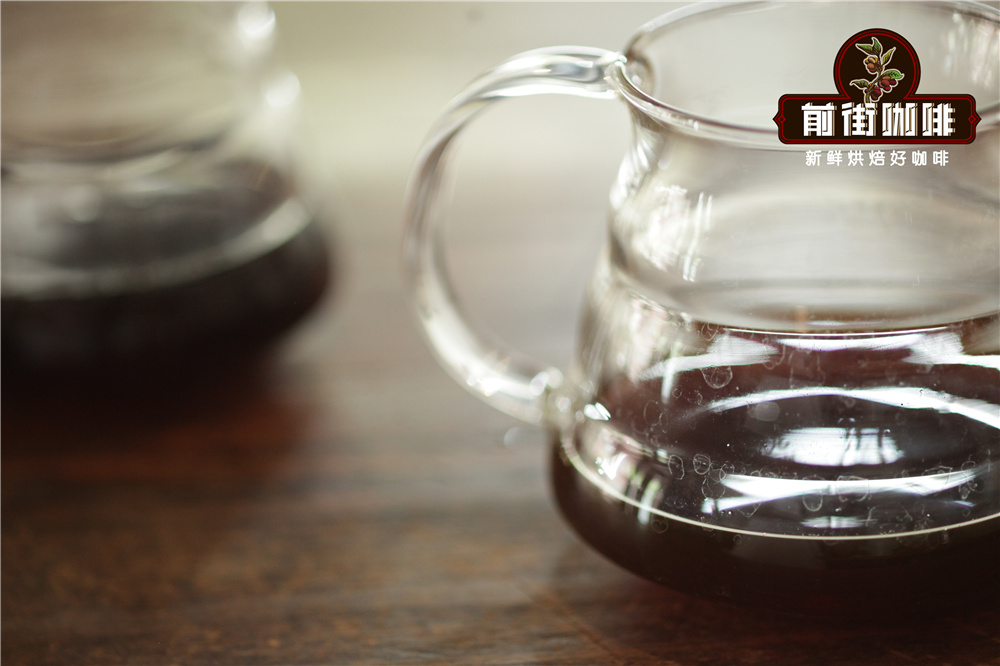
For more boutique coffee beans, please add private Qianjie coffee on Wechat. WeChat account: kaixinguoguo0925
Important Notice :
前街咖啡 FrontStreet Coffee has moved to new addredd:
FrontStreet Coffee Address: 315,Donghua East Road,GuangZhou
Tel:020 38364473
- Prev

Characteristics of coffee from Guatemala: the Waijangs Plateau
The area is of volcanic soil, with high altitude, sufficient rainfall and great humidity variation. Ash from Pacaya, Guatemala's most active volcano, provides important minerals for the soil in the region. There is plenty of sunshine in the dry season, and although the clouds and dew are heavy in the morning, they dissipate quickly. As a result, 100% of the coffee in the area is processed in the full sun. [characteristics] the acidity is bright, uniform and fragrant
- Next

Characteristics and attributes of coffee in Guatemala traditional Atitlan
Atitlan is one of the five largest volcanic coffee producing areas in Guatemala, and its soil organic matter is the most abundant among the five volcanic coffee producing areas. 90% of the traditional Atilan coffee is grown on the violent volcanic slopes of Lake Attila, where the daily breeze stirs the lake, which is an important factor affecting the microclimate of the region. The area has accumulated excellent planting and processing techniques for a long time.
Related
- Detailed explanation of Jadeite planting Land in Panamanian Jadeite Manor introduction to the grading system of Jadeite competitive bidding, Red bid, Green bid and Rose Summer
- Story of Coffee planting in Brenka region of Costa Rica Stonehenge Manor anaerobic heavy honey treatment of flavor mouth
- What's on the barrel of Blue Mountain Coffee beans?
- Can American coffee also pull flowers? How to use hot American style to pull out a good-looking pattern?
- Can you make a cold extract with coffee beans? What is the right proportion for cold-extracted coffee formula?
- Indonesian PWN Gold Mandrine Coffee Origin Features Flavor How to Chong? Mandolin coffee is American.
- A brief introduction to the flavor characteristics of Brazilian yellow bourbon coffee beans
- What is the effect of different water quality on the flavor of cold-extracted coffee? What kind of water is best for brewing coffee?
- Why do you think of Rose Summer whenever you mention Panamanian coffee?
- Introduction to the characteristics of authentic blue mountain coffee bean producing areas? What is the CIB Coffee Authority in Jamaica?

